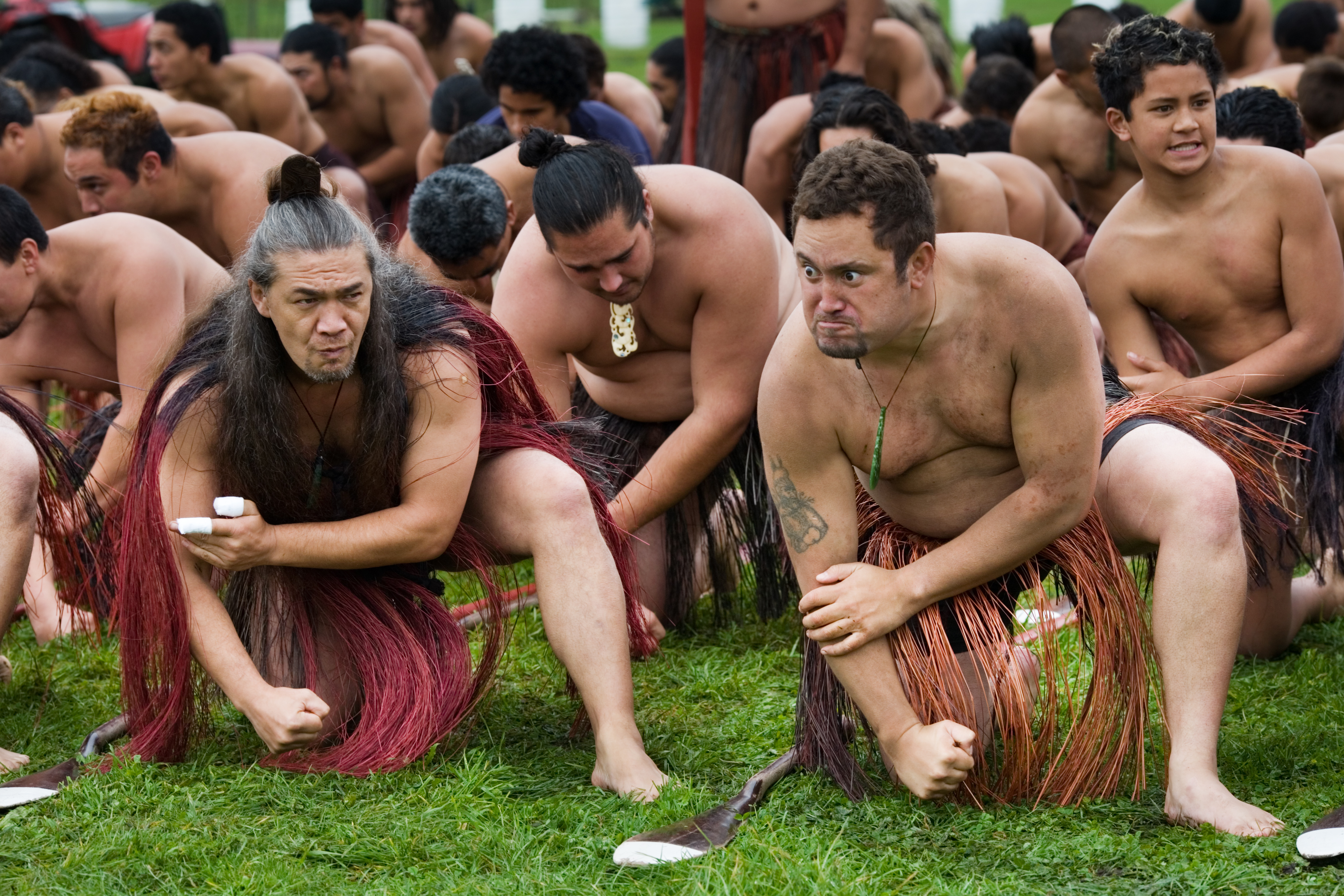Categories
- Māori (2)
August 5, 2013
The ancestors of the Māori arrived from eastern Polynesia during the 13th century, bringing with them Polynesian cultural customs and beliefs. Early European researchers, such as Julius von Haast, a geologist, incorrectly interpreted archaeological remains as belonging to a pre-Māori Paleolithic people; later researchers, notably Percy Smith, magnified such theories into an elaborate scenario with a series of sharply-defined cultural stages which had Māori arriving in a Great Fleet in 1350 CE and replacing the so-called "moa-hunter" culture with a "classical Māori" culture based on horticulture. The development of Māori material culture has been similarly delineated by the Museum of New Zealand Te Papa Tongarewa into "cultural periods", from the earlier "Ngā Kakano" stage to the later "Te Tipunga" period, before the "Classic" period of Māori history.
However, the archaeological record indicates a gradual evolution of a neolithic culture that varied in pace and extent according to local resources and conditions. In the course of a few centuries, the growing population led to competition for resources and an increase in warfare. The archaeological record reveals an increased frequency of fortified pā, although debate continues about the amount of conflict. Various systems arose which aimed to conserve resources; most of these, such as tapu and rāhui, used religious or supernatural threats to discourage people from taking species at particular seasons or from specified areas.
Warfare between tribes was common, generally over land conflicts or to restore mana. Fighting was carried out between subtribes (hapū). Although not practised during times of peace, Māori would sometimes eat their conquered enemies. Missionaries observed that slaves, especially female slaves, were killed at the whim of their masters, for minor misdemeanors. Chiefs jealously guarded their powers of authority and severely punished anyone who transgressed. Brutal punishment increased the mana of a chief. A chief was above any law. After 1800 chiefs found British law very strange in that even leaders were expected to obey its principles. As Māori continued in geographic isolation, performing arts such as the haka developed from their Polynesian roots, as did carving and weaving. Regional dialects arose, with differences in vocabulary and in the pronunciation of some words.In 1819 two young northern chiefs Tuai and Titere who had learnt to speak and write English went to London where they met the language expert Samuel Lee. They stayed with a school teacher Hall, who they told that even in Northern New Zealand there were "different languages and dialects". The language retained enough similarities to other Eastern Polynesian languages, to the point where a Tahitian chief on James Cook's first voyage in the region acted as an interpreter between Māori and the crew of the Endeavour.

The Māori (Māori pronunciation: [ˈmaːɔɾi], /ˈmɑːʊəri/) are the indigenous Polynesian people of New Zealand. The Māori originated with settlers from eastern Polynesia, who arrived in New Zealand in several waves of canoe voyages at some time between 1250 and 1300 CE. Over several centuries in isolation, the Polynesian settlers developed a unique culture that became known as the "Māori", with their own language, a rich mythology, distinctive crafts and performing arts. Early Māori formed tribal groups, based on eastern Polynesian social customs and organisation. Horticulture flourished using plants they introduced, and later a prominent warrior culture emerged.
The arrival of Europeans to New Zealand starting from the 17th century brought enormous change to the Māori way of life. Māori people gradually adopted many aspects of Western society and culture. Initial relations between Māori and Europeans were largely amicable, and with the signing of the Treaty of Waitangi in 1840 the two cultures coexisted as part of a new British colony. Rising tensions over disputed land sales led to conflict in the 1860s. Social upheaval, decades of conflict and epidemics of introduced disease took a devastating toll on the Māori population, which went into a dramatic decline. But by the start of the 20th century the Māori population had begun to recover, and efforts were made to increase their standing in wider New Zealand society. Traditional Māori culture has enjoyed a revival, and a protest movement emerged in the 1960s advocating Māori issues.
In the 2006 census, there were an estimated 620,000 Māori in New Zealand, making up roughly 15% of the national population. They are the second-largest ethnic group in New Zealand, after European New Zealanders ("Pākehā"). In addition there are over 120,000 Māori living in Australia. The Māori language (known as Te Reo Māori) is spoken to some extent by about a quarter of all Māori, and 4% of the total population, although many New Zealanders regularly use Māori words and expressions, such as "kia ora", in normal speech. Māori are active in all spheres of New Zealand culture and society, with independent representation in areas such as media, politics and sport.
Disproportionate numbers of Māori face significant economic and social obstacles, with lower life expectancies and incomes compared with other New Zealand ethnic groups, in addition to higher levels of crime, health problems and educational under-achievement. Socioeconomic initiatives have been implemented aimed at closing the gap between Māori and other New Zealanders. Political redress for historical grievances is also ongoing.

Subscribe to:
Posts
(Atom)

